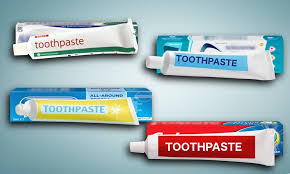Best Toothpaste for Healthy Teeth and Gums

Learn how to choose the right toothpaste based on expert advice, fluoride levels by age, and active ingredients that prevent cavities, protect gums, and improve oral health.
An adequate toothpaste makes a colossal difference in oral hygiene. Something as simple as brushing your teeth after every meal may not be fully effective if you are not using a toothpaste that meets its objectives: ensuring proper cleaning with the highest quality at the most reasonable price. Achieving this balance, of course, can be complicated.
Consumidor Global compiled a ranking of 10 oral care products, based on expert opinions from dentists and pharmacists. They emphasized that the “best” toothpaste varies depending on the patient’s needs and oral health conditions.
Dentists and pharmacists highlight three main elements when assessing toothpaste:
- Fluoride content – to prevent cavities and strengthen enamel.
- Relative Dentin Abrasivity (RDA) – to measure how abrasive the toothpaste is.
- Additional active ingredients – to address specific conditions like gum inflammation, plaque buildup, or sensitivity.
“We recommend different products depending on whether a patient has gum issues, cavities, or is a child versus an adult,” note dentists interviewed. “The best toothpastes protect against cavities, plaque, and bad breath. They contain fluoride to strengthen teeth but should have low abrasivity.”
Experts caution that price does not always indicate effectiveness. A higher-cost toothpaste isn’t necessarily better. What truly matters is the composition and balance of active ingredients.
Many dentists recommend avoiding whitening toothpastes for daily use. These tend to be more abrasive and can wear down dentin and enamel over time.
The abrasivity index (RDA) should ideally range between 40 and 70 for general use. For sensitive teeth or delicate gums, it should never exceed 40.
Fluoride is essential for remineralizing enamel and preventing cavities. However, too much fluoride can cause fluorosis (white or brown streaks on teeth, especially in children).
Recommended daily fluoride concentrations (measured in parts per million, ppm):
- Children 2–8 years: 500 ppm
- Children 8–12 years: 1,000 ppm
- Adults: 1,000–1,500 ppm
(Source: American Dental Association & CDC)
Helpful Active Ingredients in Toothpastes
Depending on specific needs, certain ingredients may offer additional benefits:
- Chlorhexidine – strong antiseptic for gum inflammation or after dental surgery.
- CPC (cetylpyridinium chloride) – prevents plaque formation and may help reduce viral load, lowering risks of infections like flu or COVID-19.
- Aloe vera & vitamins (E, A, C, provitamin B5) – support gum healing and tissue regeneration.
- Triclosan – used in some formulas to fight gingivitis (though now less common due to safety concerns).
Professional Advice: How to Choose the Right Toothpaste
- Ask your dentist: Since every mouth is different, a professional recommendation ensures you are not using overly abrasive or ineffective formulas.
- Look for the ADA Seal of Acceptance: The American Dental Association seal guarantees the product meets safety and efficacy standards.
- Match toothpaste to your needs: For example, sensitivity toothpaste contains potassium nitrate to calm nerve endings, while anti-gingivitis formulas include chlorhexidine or triclosan.
- Avoid “overbrushing”: Even the best toothpaste can harm enamel if you brush too hard or too often. Use a soft-bristled toothbrush and gentle circular motions.
The best toothpaste is the one that matches your oral health needs, has the right fluoride level for your age, and carries professional approval. Don’t choose based only on price or whitening claims—ask your dentist to recommend what’s best for you.

